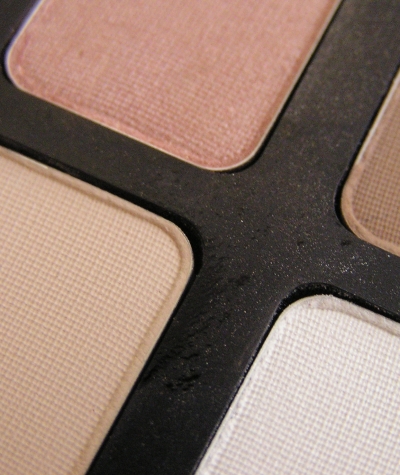The basis of a pressed eye shadow is talc or mica, which sometimes consists of up to half the product. Talc or mica is used because it has excellent smoothness.
The following ingredients are all used for their covering power: powdered kaolin - a smooth, fine, powdered type of clay; titanium dioxide - this ingredient provides coverage and gives a product its opaque quality. Binders are essential ingredients, needed to make the shadow adhere to the eyelids. Carefully chosen pigments and preservatives are included in the product as well. Ti02/mica is the main ingredient used in pearlised eye shadows as it provides a beautiful lustre and is very smooth in texture, so applies easily.
The compression technology used to create 'tablets' of eye shadows is borrowed from the pharmaceutical and confectionery industry. Just as many ingredients are compressed into a sweet or medicine, so this technology has allowed technicians to create combinations of ingredients in their optimum levels.
New innovations in eye shadow have seen high-tech lubricants such as boron nitride, originally conceived and used in the electronics and aerospace industries, used in formulas. This ingredient has multiple effects, providing incredible lustre, combined with a very fine, silky texture (it feels slippery to touch), but contrastingly, it also offers excellent adhesion to the skin. Also relatively new and only introduced over the last few years is a silica based pearlised material, which again provides that all important shimmering finish.
Finally, the innovation in the processing of eye shadows has moved at a rapid rate and there is now a huge diversity in how an eye shadow appears visually, whether layered with other colours, embossed or de-bossed and presented with varying finishes.

